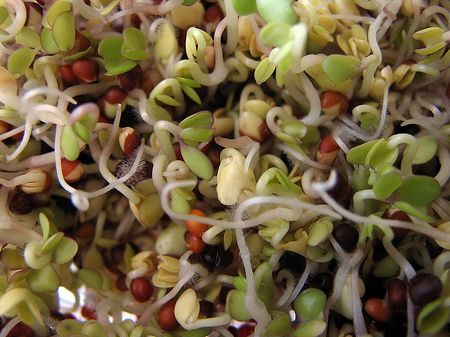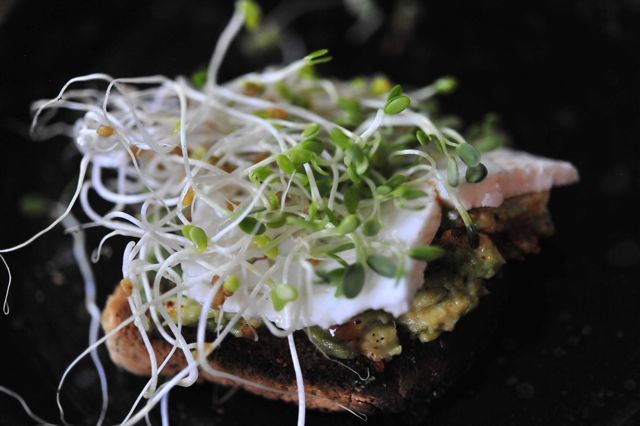3.4.11 Sprouting Wings
Has the light appeared at the end of the tunnel? The days are definitely getting longer. Daylight savings is right around the corner. And soon, delicate shoots and buds will begin to festoon the skeletal branches of winter. But I've got the blues, baby, and I'm dancing as fast as I can to shake them from my weary bones. On mornings like this, the sun on my face is a balm, a promise of better days to come. I thank my stars for the roof over my head and the love of a good man, but there is a heaviness in my soul that, like a magnet, seems to dredge up all the pain and bitter disappointments I have ever known.
This, too, shall pass. Because everything always does. I have no child upon whose steady growth to mark the passage of time, but the ever-changing seasons tell it all. The snowdrifts out my window will give way to Queen Anne's lace and monkeyweed, Japanese beetles will streak by in a flash of iridescence, and I will crush tomato leaves between my dirty fingers and inhale the smell of summer. In the meantime, I will harness the raw energy of the sun, chewing and swallowing it in the form of life-giving sprouts.
This, too, shall pass. Because everything always does. I have no child upon whose steady growth to mark the passage of time, but the ever-changing seasons tell it all. The snowdrifts out my window will give way to Queen Anne's lace and monkeyweed, Japanese beetles will streak by in a flash of iridescence, and I will crush tomato leaves between my dirty fingers and inhale the smell of summer. In the meantime, I will harness the raw energy of the sun, chewing and swallowing it in the form of life-giving sprouts.
Sprouts from seeds, grains and legumes rank as the freshest and most nutritious of all vegetables. When compared to the non-sprouted embryo from which they derive, sprouts have vastly improved digestibility (sprouted beans lose that gas-producing effect) and nutritional qualities. In the process of sprouting, vitamins, minerals and easily digestible protein increase substantially, as does their water content, with a corresponding decrease in calories and carbohydrates.
Sprouts are superfood.
I know many of you balk at taking vitamins, and hope to get all your nutrition from food. This can be challenging given how devalued much of what we eat becomes due to high-heat processing and depleted soil. Sprouts are a great option for you, as they are an extremely effective (and inexpensive) method of ingesting highly concentrated vitamins, minerals and enzymes. Just be sure that that the sprouts you eat—and the dried seeds and beans you may be sprouting—are truly fresh and unsprayed.
All edible grains, seeds and legumes can be sprouted, and I'm going to tell you all about home sprouting next week. But if you're not up for that, you can find those little containers of sprouts, singly and in mixes, at the grocery store and often at farmers markets. I once had some long yellow corn sprouts from the Union Square farmers market that were mind-blowingly sweet. One thing to note: I read in Nourishing Traditions that alfalfa seeds contain an amino acid called canavanine that can be toxic when ingested in quantity. Apparently, tests have shown that alfalfa sprouts inhibit the immune system and can contribute to inflammatory arthritis and lupus. So although they have long been a staple of hippie sandwiches, it's best to avoid those, I think.
Sprouts are superfood.
I know many of you balk at taking vitamins, and hope to get all your nutrition from food. This can be challenging given how devalued much of what we eat becomes due to high-heat processing and depleted soil. Sprouts are a great option for you, as they are an extremely effective (and inexpensive) method of ingesting highly concentrated vitamins, minerals and enzymes. Just be sure that that the sprouts you eat—and the dried seeds and beans you may be sprouting—are truly fresh and unsprayed.
All edible grains, seeds and legumes can be sprouted, and I'm going to tell you all about home sprouting next week. But if you're not up for that, you can find those little containers of sprouts, singly and in mixes, at the grocery store and often at farmers markets. I once had some long yellow corn sprouts from the Union Square farmers market that were mind-blowingly sweet. One thing to note: I read in Nourishing Traditions that alfalfa seeds contain an amino acid called canavanine that can be toxic when ingested in quantity. Apparently, tests have shown that alfalfa sprouts inhibit the immune system and can contribute to inflammatory arthritis and lupus. So although they have long been a staple of hippie sandwiches, it's best to avoid those, I think.

cancer-fighting broccoli sprouts
Broccoli sprouts have a mild peppery flavor and are high in cancer-fighting sulforaphane. They are excellent juiced or in salads. Clover sprouts contain a significant source of isoflavones which are proven to have powerful anti-cancer properties. Lentil sprouts are 26% protein. Spicy radish sprouts have 29 times the vitamin C in milk and 4 times the vitamin A. Mung bean sprouts are a good source of protein, fiber and vitamin C. Onion sprouts, with a pronounced onion flavor, are 20% protein and a good source of vitamins A, C and D. Sunflower sprouts have a nutty flavor and are a rich source of lecithin and vitamin D.

sprouts have a short lifespan and must be eaten fresh
Here are a few suggestions for places to incorporate sprouts into your diet: tossed salads; coleslaw; potato salad; wraps and sandwiches; stir-fries; smoothies and juices; with soft cheeses for a dip; stirred into or garnishing soups or stews; mixed into pancake or waffle batter; in scrambled eggs and omelets; rice dishes; sushi; even steamed and served with butter.
The photo at the top shows one of my favorite go-to lunches: a slice of toasted German sunflower seed bread, topped with a little mashed avocado, a thin slice of goat's-milk feta and a pile of fresh, crunchy sprouts. Like a ray of sunshine on a cloudy day...
The photo at the top shows one of my favorite go-to lunches: a slice of toasted German sunflower seed bread, topped with a little mashed avocado, a thin slice of goat's-milk feta and a pile of fresh, crunchy sprouts. Like a ray of sunshine on a cloudy day...








7 Comments